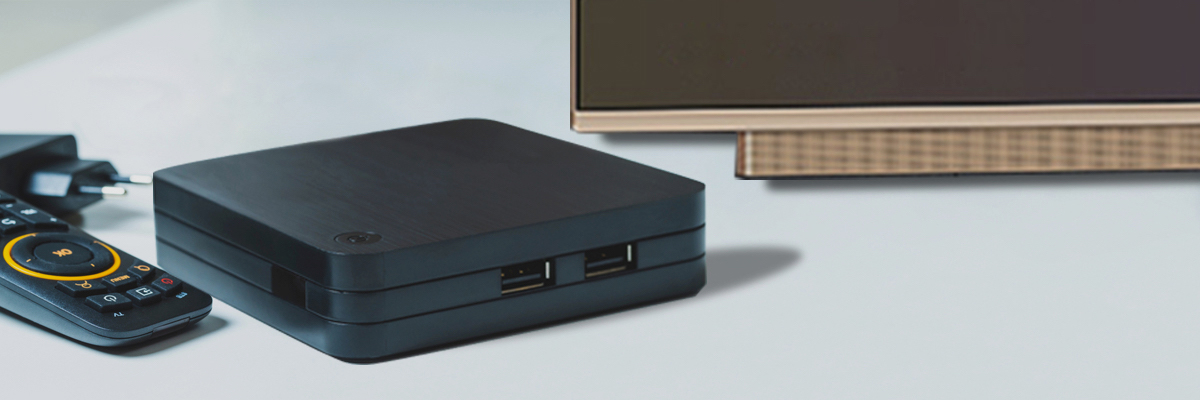- Applications
- Products
- Support
- About HiSilicon
Search
No Result

Enabling 8K+AI Audiovisual Experience

High-Quality UHD Smart TV
Notably, the HiSilicon smart TV solution supports our proprietary HiStreaming technology, which enables smart TVs to quickly identify any peripheral devices that also support HiStreaming, implement seamless connection for lower latency and higher safety, and support structured transmission of AI data. This allows peripheral devices to be virtually operated and controlled as local devices, delivering the best possible experience to every member of the household.
HiSilicon has been researching and manufacturing smart TV SoCs for almost a decade, and millions of TVs around the world already use HiSilicon technologies to provide consumers with optimal audiovisual quality. As the global leader in the smart TV SoC sector, HiSilicon offers a full range of smart TV SoCs that support HDR, AI picture quality (AI-PQ), motion estimation/motion compensation (MEMC), and a wide range of different resolutions, from full high definition (FHD) to 4K/8K. All HiSilicon solutions support HarmonyOS, Linux, Android, and other mainstream operating systems. In addition, HiSilicon SoCs come equipped with the following peripheral chips:
- Image enhancement: further enhances the image quality for high-end products
- Display driver: features the large-screen timing controller (TCON) and screen source driver chip, ensuring clearer images and higher reliability
- Visual perception: provides consumers with a smoother and smarter experience via HiStreaming with the full series of HiSilicon AI camera chips.
- Wireless connection: WiFi, 4G, etc.

Optimal Audiovisual STB
A set-top box (STB) is a media device connected to a TV. It decodes audio and video signals which are then sent to the TV, compensating for the TV's data processing and app extension shortcomings.
As artificial intelligence (AI) and the Internet of Things (IoT) continue to rapidly advance, STB functions have evolved from simply decoding audio and video to gradually encompassing all major smart home features, such as camera capabilities, ultra-high-definition (UHD) encoding/decoding, access technologies such as WiFi, high-quality audio playback, and local video display. Modern STBs are now capable of the following functionality:
- Interconnecting with smart home devices, integrating far-field and near-field voices, and utilizing cameras and sensors to detect motion and identify postures.
- Integrating audio, video, and news content from the Internet, identifying users, and intelligently recommending and displaying content.
No longer a mere decoding chipset, the STB SoC can now integrate high-performance CPU, NPU, UHD codec, ISP, and premium audio DSP.
Recent years have seen online videos become a major cultural phenomenon, with a diverse range of attractive content — including short videos and live streaming — more accessible than ever before. With such a wide variety of content and varying daily routines, it becomes difficult to satisfy the entertainment needs of an entire household with just a single TV screen. The intelligent STB has been developed as a remedy which integrates high-quality audio and video output devices to provide more convenient and flexible video playback modes for consumers. In addition, with the high-performance CPU, GPU, NPU, ISP, and DSP, the intelligent STB is a suitable entry for implementing smart home controls.
HiSilicon launched its first STB SoC in 2007. Over the past decade, HiSilicon and its partners have blazed a trail in such fields as HD, intelligence and 4K/8K, and hundreds of millions of STBs based on HiSilicon SoCs have now been brought online. In addition to providing high-quality audio and video services for consumers, they also represent highly reliable and easy-to-manage solutions, capable of serving multiple carriers. HiSilicon STB SoCs feature industry-leading image quality enhancements, alongside robust system performance, while certain mid- and high-end products integrate the Da Vinci AI NPU module and support in-depth integration into the HarmonyOS ecosystem. By offering diverse external interfaces and working with camera and WiFi chips, our SoCs provide consumers with seamless home connections and smart home services.

Capturing Best Moments with Smart AI Cameras
- High image quality: 4K/8K UHD image quality with digital image stabilization (DIS) algorithms.
- Intelligence: Support for object identification and tracking, simultaneous localization and mapping (SLAM) for UAV, and intelligent obstacle avoidance.
- Compact design: Must satisfy the high requirements of portable and UAV cameras in terms of size and power consumption.
- Wireless connection: High-speed and low-latency connection for wireless sharing and live streaming.
At HiSilicon, we provide industry-leading Smart Vision and Smart IoT products. Our professional solutions are tailored for action DVs, smart cameras, and commercial UAVs, and we make it easy to create high-quality movies and capture unmissable moments.
Long battery life and smart HD recording
- Our solution supports 8K UHD, ISP, and H.265 video for better image quality, and 6-DoF DIS that ensures stability and clarity when the camera is moving.
- Accelerated AI computing powered by efficient NPU enables AI scene identification and allows the camera to automatically center on the tracked object. A pan-tilt-zoom (PTZ) camera can easily produce a smart tracking effect which is difficult for conventional cameras to achieve. This means users no longer need to be photography experts to create jaw-dropping blockbusters.
- The depth processing unit (DPU) supports hardware acceleration for binocular ranging and 3D reconstruction, allowing UAVs to avoid obstacles during flight.
- An intelligent algorithm enables ultra-low power consumption to prolong battery life. When paired with the unique turbo start function, your camera is always ready for action.

XR: Virtual Has Never Been So Real
Virtua l reality (VR) technology generates an advanced, computer-driven simulation of the real world, allowing consumers to interact with objects in a three-dimensional space. From a technological perspective, VR exhibits the following three basic attributes: immersion, interaction, and imagination.
Augmented reality (AR) technology overlays digital information onto the physical world, as AR glasses integrate display, interaction, sensing, and multimedia capabilities. AR represents a more lucrative field than VR, and enormous progress has been made in a number of entertainment and B2B domains, including security, industry, tourism, and healthcare. AR smart glasses can also boost work efficiency by streamlining the operation processes and enabling remote assistance.
Mixed reality (MR) technology combines the real and virtual worlds to create an all-new visual environment where physical and digital objects coexist and interact with each other in real time. Representing the combination of VR and AR, MR technology introduces real scenario information into the virtual scenario and establishes an information loop of interactions between the virtual and real worlds to provide a heightened sense of reality. The emergence of MR has helped break through the inherent limitations of VR resulting from its entirely virtual nature, enabling an expanded range of human-machine interactions with correspondingly broad commercial applications.
However, current XR devices still face the following challenges:
1. Low resolution devices: In the case of VR, the ideal resolution for the human eye is approximately 60 pixels per degree (PPD). Generally, the single-eye resolution supported by 4Kp60 chips is 21.3 PPD, which is equivalent to viewing a 480p TV. An obvious screen-door effect is often present in this case, which greatly impacts both comfort and immersion. If the chip's capability can be upgraded to 8Kp120 hardware decoding, it will be able to support twice the resolution of current mainstream VR systems — single-eye 42.7 PPD — significantly improving the visual experience and offering greater comfort.
2. Dizziness: 25% of consumers rank dizziness as the number one obstacle preventing them from purchasing XR devices. Latency caused by insufficient CPU processing capabilities is one of the main causes of dizziness, as visual information fails to be rendered in sync with a user's head movements, resulting in disorientation.
3. NPU-based scene identification speed: Scene identification involves image capture, analysis, upload, and display. The faster a scene is identified, the better the resulting experience. However, to identify and analyze hundreds of faces per minute, not to mention license plates within milliseconds, chipsets must incorporate powerful NPU computing capabilities.
4. Transmission bandwidth and latency: According to HUAWEI X-Labs white papers, bandwidth of up to several Gbit/s and millisecond-level latency are required to ensure a premium experience. As traditional 4G and WiFi are unable to meet these requirements, WiFi 6 is the preferred technology.
HiSilicon offers a comprehensive XR (VR/AR/MR) solution, including such components as application processing (AP), display, vision, and connection.
High-performance computing:
- Independent NPU with HiSilicon-exclusive architecture, providing up to 9 TOPS of AI compute power
- Octa-core Cortex-A73 processor, delivering high-speed computing with reduced latency
- 8K UHD decoding, supporting 8K 360-degree immersive XR panoramic video
- 4K UHD low-latency encoding, supporting XR remote immersive video conferences and remote assistance applications
- AI PQ enhancement
- XR audio and audio effect processing
- Low-power AI visual solution, human/object detection and tracking, and AI visual enhancements
- Intelligent voice solution
- Simultaneous localization and mapping (SLAM) and six degrees of freedom (6DoF) application
- Low-latency image transmission supports both cloud VR applications and short-range wireless image transmission applications
- High-speed and low-latency connection solution (WiFi 6)
Follow US
Contact Us
-
Shanghai
Room 101, 2 Hongqiaogang Road, Qingpu District, Shanghai
+86 755 28780808
support@hisilicon.com
-
Shenzhen
New R&D Center, 49 Wuhe Road, Bantian, Longgang District, Shenzhen
+86 755 28780808
support@hisilicon.com
This site uses cookies. By continuing to browse the site you are agreeing to our use of cookies. Read our privacy policy
